
NOTE: I have updated our brainstorming post to include all the relevant links (as the documentation) including: artistic statement, mood board and presentation. These links can all be found here.
The goal of our project was to design with a climate-disrupted future in mind. We focused on the light sources, considering future challenges in access to energy which will likely happen when climate disasters occur and people live in temporary shelters. The 2-liter bottle lantern is functional in its ability to give light – but our main contribution is the aesthetic plastic frame that is designed to create an uplifting ambiance in the room to remind its residents of better days to come.
Reflection on ideas and planning:
While I was in love with our idea, I was very worried that we would not manage to shape the plastic or make any detailed lantern designs. However, this is where teamwork was really useful. For example, when I was trying to cut up the heat-pressed plastic, Hannah was watching and suddenly got the idea that we should only partially cut the plastic and use the partial cuts as folds where we can bend the plastic. It was also great to bounce ideas back and forth with my teammates because this allowed us to better evaluate each proposal. One final thing that really helped our team was making a detailed timeline for the week. This helped us create targets for what we had to finish by the end of each day.
Reflecting on the process :
One key lesson that I took away from the project was that improvising is fun and very helpful. Since so many tools were not available, our team had to be a lot more inventive with how to make the lantern frames. For example, on Tuesday we were not able to use the drill because Pantelis was working other groups. However, we found an alternative which was to heat up a screw driver with a heat gun and use it to create decorative holes in the plastic:
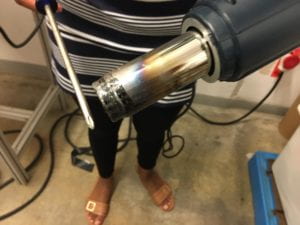
This is just one example of how we maximised the use of our available resources and it is actually quite fun to imagine different techniques that would help us accomplish the same goal. In the case of the heat-pressed plastic, using the hot screw driver allowed me to have a lot more control (in comparison to the drill) over the patterns that I was making. This really helped me to form some patterns in the plastic, specifically the one seen in the picture below where design shown in the white box has been put in the middle of the panels of plastic and some extra holes added on top and bottom:
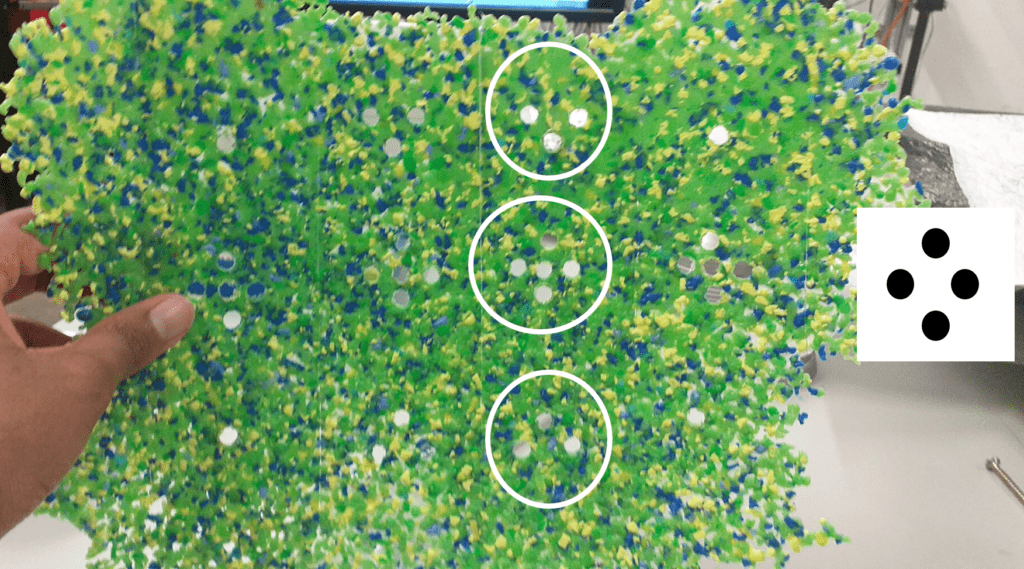
The heat pressed sheet was made from our own unique mix of green, yellow and blue shredded plastic because are quite bright and earthy colours.
The oven-melted plastic was too hard to use the above methodology. Instead we directly used a heat gun to soften the plastic until it was foldable. Again teamwork was crucial because one of us had to rotate/fold the plastic while the other person held up the heat gun.
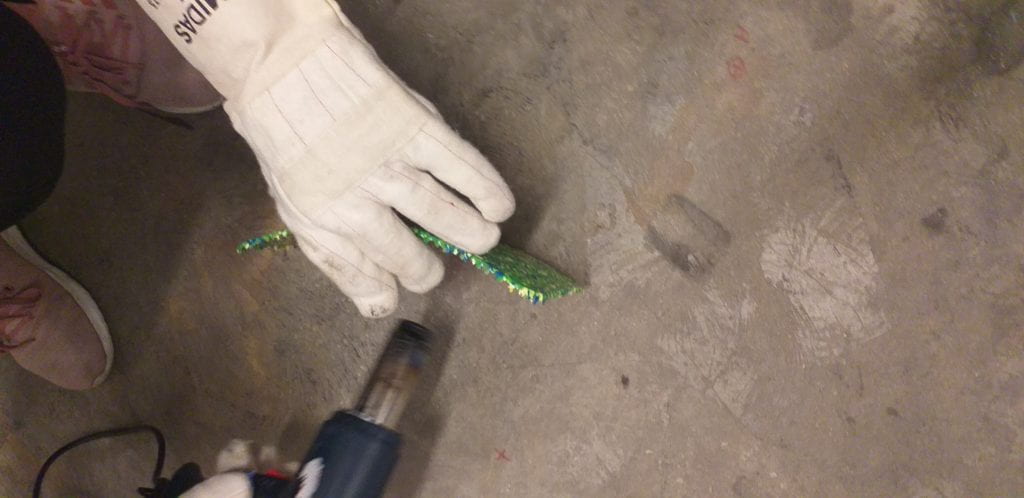
Using the power of heat to shape our plastic into the right shape. We had to be careful not to leave the heat concentrated in one area of the plastic for too long.
Finally, the paper bag sheet was the simplest to make, where we followed the same method as the coin purse activity to make the lantern’s material. To create the aesthetic patterns we used the same approach that is used when creating paper snowflakes. This way we were able to copy the techniques used in papercrafts in order to create our frame designs.
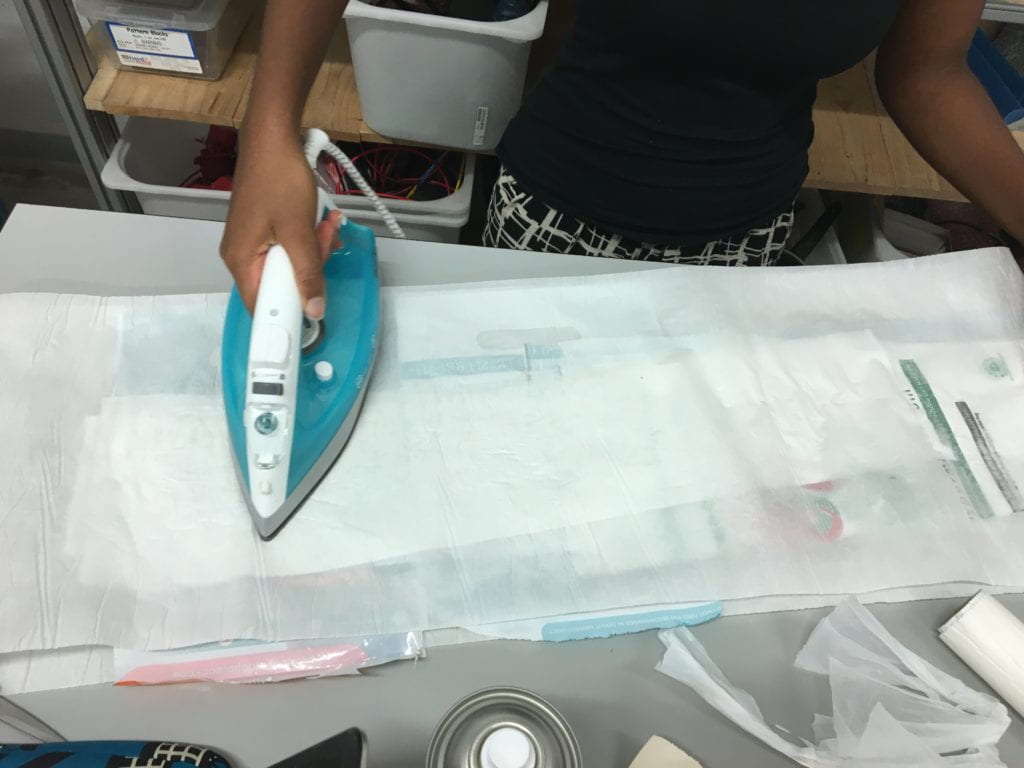
We deliberately selected plastic bags that had colours like green or yellow (or white if not available) in order to continue with our theme of ‘earth colours’.
Failures and Successes
Successes:
- We learned how to use heat to our advantage and we were able to make alternative tools using the heat gun.
- We were able to plan out our objectives for each lab session and reach most of our goals on time.
- Learning how to use the heat press was a bit hard but we managed to create the plastic we wanted by following the professor’s guidelines.
Failures:
- Besides the plastic bag lantern, it was quite hard to carve patterns in oven-melted plastic.
- Burning the top layer of the oven melted plastic by leaving it in the oven too long.
- Failure to remove wrapping paper from the plastic after the plastic came out of the heat press.
Reflecting on Results:
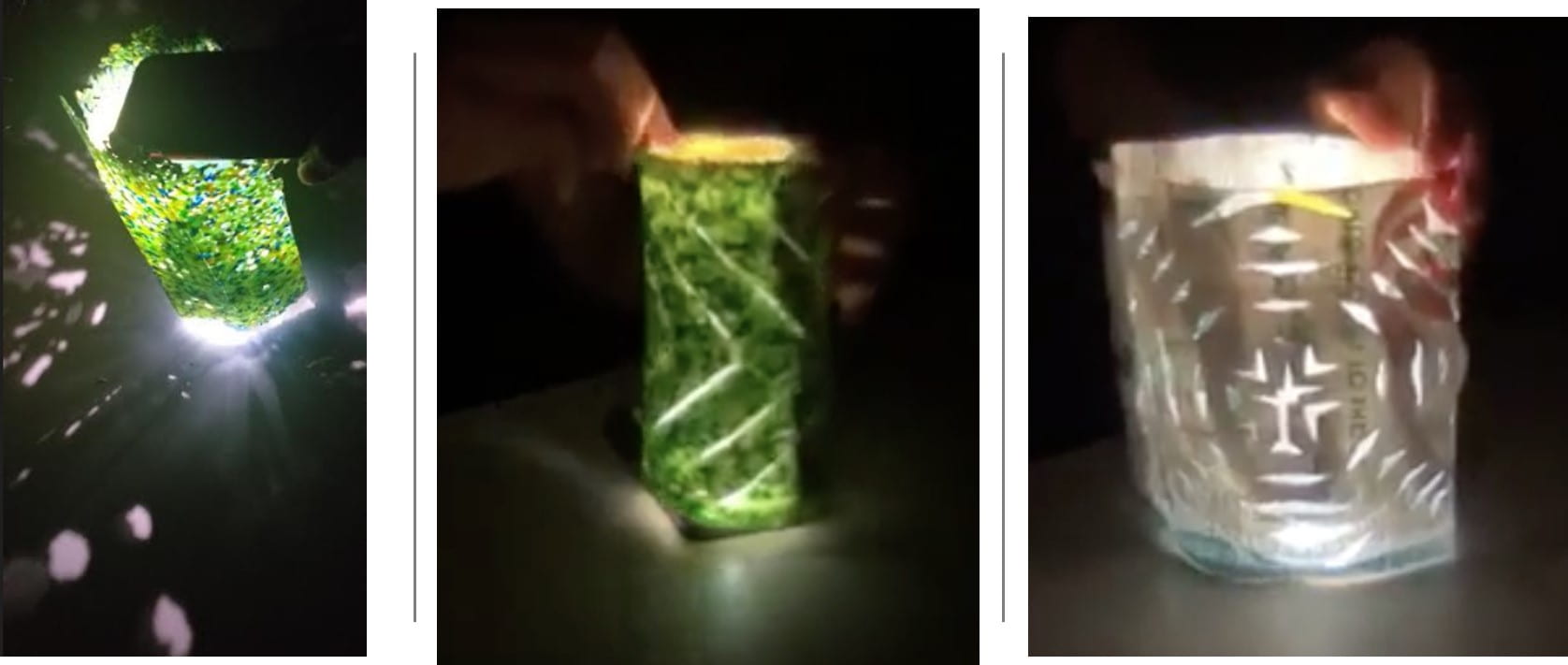
Testing out the lantern frames in the dark.
I truly loved taking some of the above pictures in the dark – the shadows that were created by the lantern patterns were amazing, considering how little time we had to create these items. Seeing the results in action reminded me about the goal of our project: to help future generations create beautiful and hopeful indoor spaces when the world around them is falling apart. Even though our product is far from perfect, I found a lot of beauty and comfort in the way that lanterns lit up the room and I believe that future generations will too.
Reflecting on learnings:
Finally, doing this project led me to appreciate the large amount of creative and physical energy that is required to work with plastic. Sitting in class and listening to guest speakers talk about plastic recycling was easy. But this project showed me that doing the work of recycling plastic requires a significant amount of personal effort. This has made me appreciate their (the guest speakers) work a lot more.
Many thanks to Professor Godoy, Kevin and Pantelis for this amazing plastic adventure!
Leave a Reply